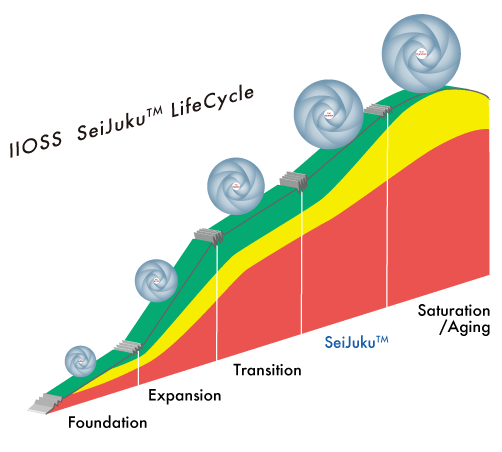IIOSS SeiJuku™ Lifecycle Model
We created the SeiJuku™ Lifecycle model assuming that every organization has to pass through five developmental phases: Formation, Expansion, Transition, SeiJuku, and Saturation.

SeiJuku™ Lifecycle model is based on the following principles:
- Organizations have lifecycles or developmental phases, like all living organisms.
- An organization exhibits predictable and repetitive patterns of behavior in each phase.
- Advancement on the developmental path is exhausting: there is a wall or kabe 壁 on each phase.
The SeiJuku Lifecycle model is a powerful diagnostic tool for management to identify in which development phase the organization is, understand to which phase it is heading, and implement transformation required for successfully reaching this target phase.
As an organization maximizes the business opportunity at its birth, it attempts to survive the competition while offering something original and unique. Entering the orbit of growth and maturity leads to recognition and success.
Growing and maturing processes are not linear – the organization needs to resolve its internal and external struggles so that it can survive and prosper.

